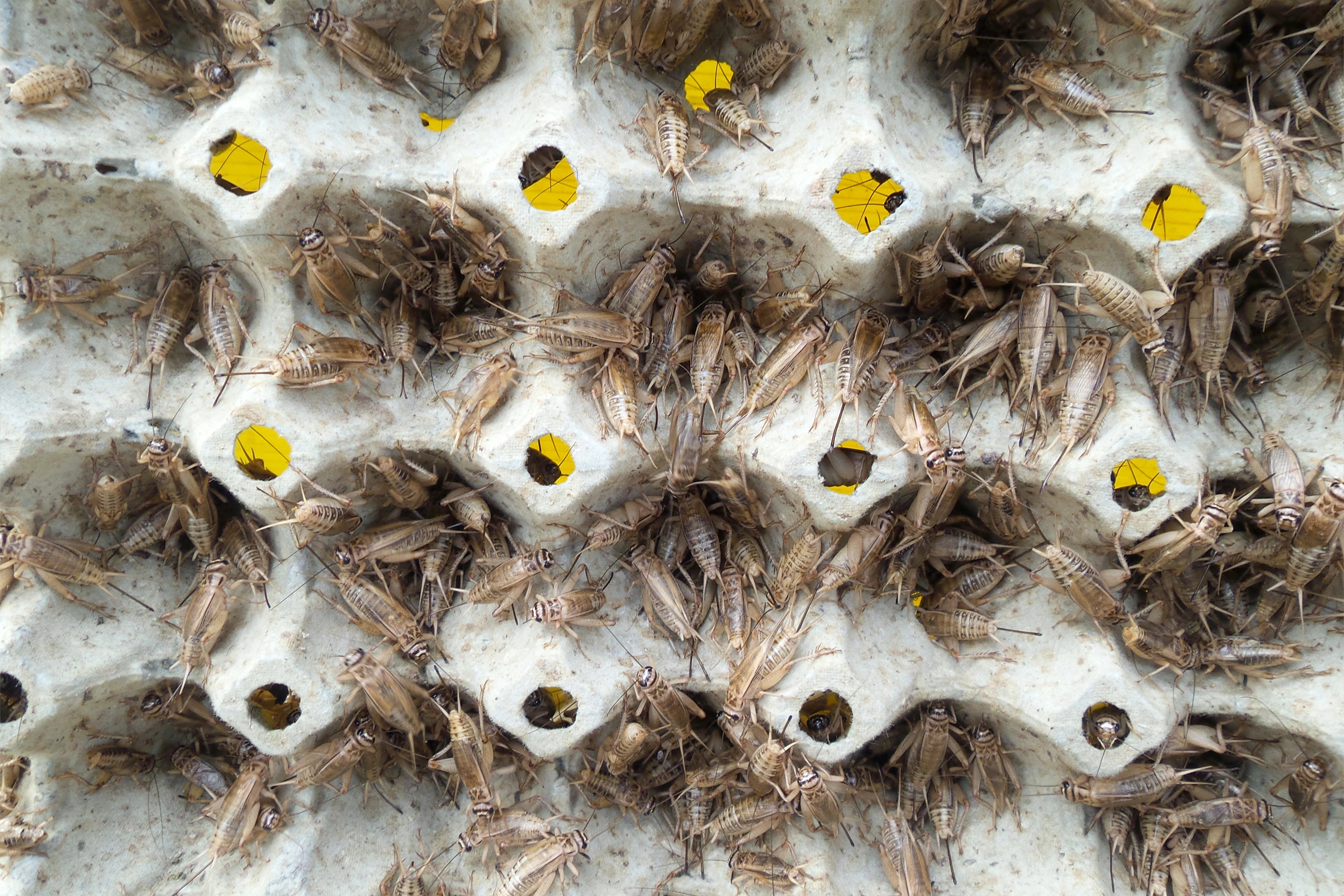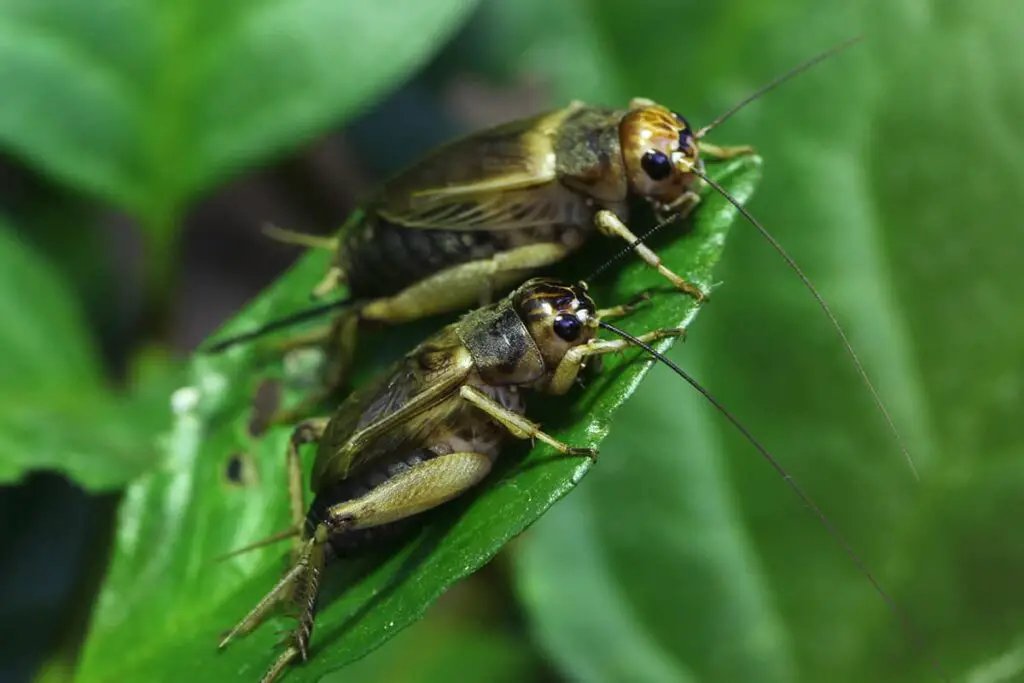
Keeping crickets as pets is an unusual yet rewarding hobby. Unlike traditional pets, crickets require minimal maintenance, making them an excellent choice for both children and adults interested in observing the fascinating behaviors of these chirpy insects. To ensure a healthy and happy life for your pet crickets, you’ll need to gather some essential supplies beforehand.
You’ll discover that setting up an ideal habitat for your cricket companions involves a few key items. A well-ventilated enclosure ensures they have a safe, comfortable environment, while choosing the right substrate, like soil or newspaper, allows for easy cleanup and mimics their natural conditions. To add to the comfort of your pets, providing egg cartons or similar structures offers cozy hiding and climbing spaces, perfect for their active lifestyle.
Proper nutrition and temperature control are vital for your cricket’s health. Offering a balanced diet and maintaining the habitat within a safe temperature range will support their wellbeing. The necessary supplies to create this environment are straightforward and affordable, such that even beginners can start on the right foot with confidence.
Choosing the Right Habitat
Creating a comfortable home for your pet crickets requires careful consideration of the habitat’s size, substrate, and climate conditions.
Habitat Size and Shape
Your crickets need enough room to move, hide, and explore. A 10-gallon tank can house a small colony of crickets comfortably. For shape, choose a rectangle tank as it provides more surface area for crickets to live and climb. You can find guidance on setting up the space on The Critter Depot.
Substrate and Bedding
The floor of your cricket habitat should be lined with a substrate or bedding that’s easy to clean and safe for your crickets. A good choice is coconut fiber or peat moss, which you can keep dry to prevent mold. On top, add egg cartons or toilet paper rolls for hiding and climbing. These tips for a clean and safe environment are elaborated on Petco’s cricket care sheet.
Temperature and Humidity Control
Crickets thrive in a habitat that’s between 70 and 75°F with moderate humidity. Avoid temperatures below 65°F and above 80°F. To control the climate, a simple thermometer and hygrometer will help you monitor the conditions. Find additional information on maintaining the ideal conditions on Petco’s cricket care sheet.
Feeding Your Crickets
Proper nutrition is crucial for your pet crickets to thrive. You’ll need to know what to feed them, how often to feed them, and how to provide them with water.
Dietary Requirements
Crickets are omnivorous and require a varied diet to stay healthy. In captivity, your crickets will benefit from a balance of:
- Plant material: Such as fruits, vegetables, and grains.
- Protein sources: Like insect larvae and commercially available cricket food.
You can occasionally treat them to small pieces of apple or squash, and ensure they have access to high-protein foods. For more details on what to feed your crickets, you can learn about their dietary preferences.
Feeding Schedule
It’s important to establish a consistent feeding schedule:
- Adult crickets: Feed once a day.
- Young crickets (nymphs): Feed twice a day due to their faster metabolism.
Give them only as much food as they can consume in 24 hours to prevent spoilage and maintain cage cleanliness.
Water Sources
Crickets require a consistent source of water. Instead of an open water dish, which can pose a drowning risk, provide:
- A shallow dish with water-absorbing polymer crystals or
- Wet a sponge and place it in the cricket enclosure.
Remember to change the water supply daily to prevent mold and bacteria growth.
Maintaining Proper Hygiene
Maintaining proper hygiene in your cricket habitat is crucial to ensure the health of your crickets and to prevent the spread of diseases. A clean environment reduces stress and promotes the well-being of your pets.
Regular Cleaning Routines
To keep your cricket enclosure clean and habitable, establish a consistent cleaning schedule. Perform a general clean-up of the habitat at least every other week. This involves removing and replacing the substrate such as soil or newspaper, and wiping down the sides of the tank. Use safe disinfectants or a mild bleach solution, ensuring that any residue is thoroughly rinsed away before reintroducing your crickets.
Waste Management
Effective waste management is key to preventing odors and potential health issues. Here’s what you need to do regularly:
- Remove dead crickets: Do this daily to stop decay and prevent bacterial growth.
- Replace food and water dishes: Clear out uneaten food and refresh water sources to prevent mold.
Crickets produce waste, so eliminate droppings by spot cleaning every few days and conducting a deeper clean during your regular habitat maintenance.
Preventing Diseases
A hygienic environment is your first defense against diseases among your cricket population. Here are some specific steps to minimize the risk of illness:
- Isolate new crickets: Before introducing them to your existing group, keep new crickets separate to monitor their health.
- Ventilation: Ensure your tank has adequate ventilation to reduce humidity and prevent fungal growth.
By adhering to these hygiene practices, you are setting up a strong foundation for the wellness of your pet crickets.
Cricket Enrichment
Providing the right environment for play and social interaction is crucial for the health and well-being of your pet crickets.
Exercise and Play
Your crickets require ample space to move and structures to climb on, ensuring they get enough exercise. A well-ventilated tank with egg cartons or toilet paper rolls gives them an ideal playground for climbing and exploring.
Social Environment
Crickets are naturally social insects that thrive in groups, so keeping multiple crickets together can promote a healthier social environment. It’s important to provide a habitat spacious enough to accommodate several crickets without overcrowding.
Frequently Asked Questions
Here’s a collection of common inquiries you might have about keeping crickets as pets, along with straightforward advice to ensure they thrive under your care.
How can I ensure a comfortable habitat for my pet cricket?
To create a comfortable habitat for your cricket, provide a well-ventilated tank with a substrate like soil or newspaper, and include egg cartons for hiding and climbing. Keep the temperature between 70-75°F and ensure there’s enough space for food and water containers.
What type of food is best for maintaining a healthy cricket diet?
Crickets thrive on a varied diet including high-protein foods, fresh fruits, and vegetables. You can also provide specially-formulated cricket food available at pet stores to ensure they receive all the necessary nutrients.
What is the optimal lifespan of a pet cricket and how can it be maximized?
A pet cricket typically lives between one to two years. Maximizing their lifespan involves maintaining proper habitat conditions, offering a balanced diet, and ensuring regular cage cleanings to prevent disease.
Where can I find a pet cricket for purchase?
Pet crickets can often be found at local pet stores or through breeders. You may also find them available for purchase at reptile expos or on various reputable online platforms.
How often should I clean my cricket’s cage to ensure a hygienic environment?
Regular cleaning, at least once a week, is crucial to maintaining a hygienic environment for your crickets. Remove waste, uneaten food, and refresh the substrate as part of your cleaning routine to prevent mold and bacteria.
What are the benefits of having a cricket as a pet?
Having a cricket as a pet can be fascinating and educational, as they are interesting insects to observe and require minimal space. They make low sounds at night, providing a natural ambiance, and are non-biting, making them safe for children to learn about.
Driven by a passion for those tiny creatures that rule our world, we at Bug Domain strive to be your go-to resource for information on insects.



